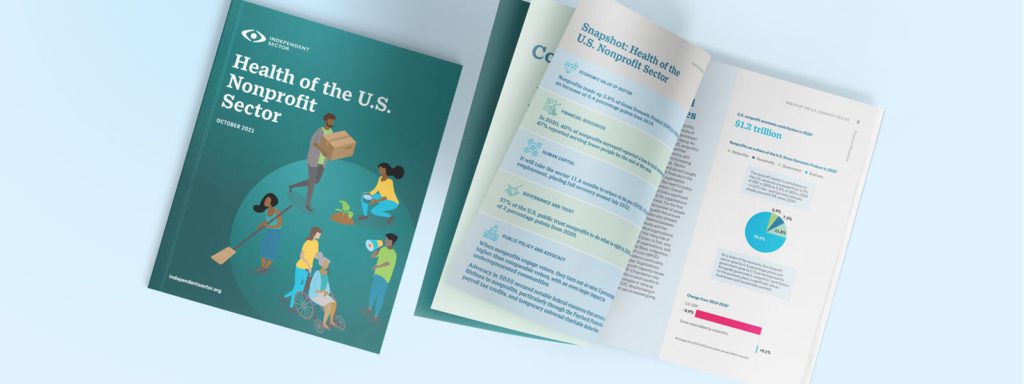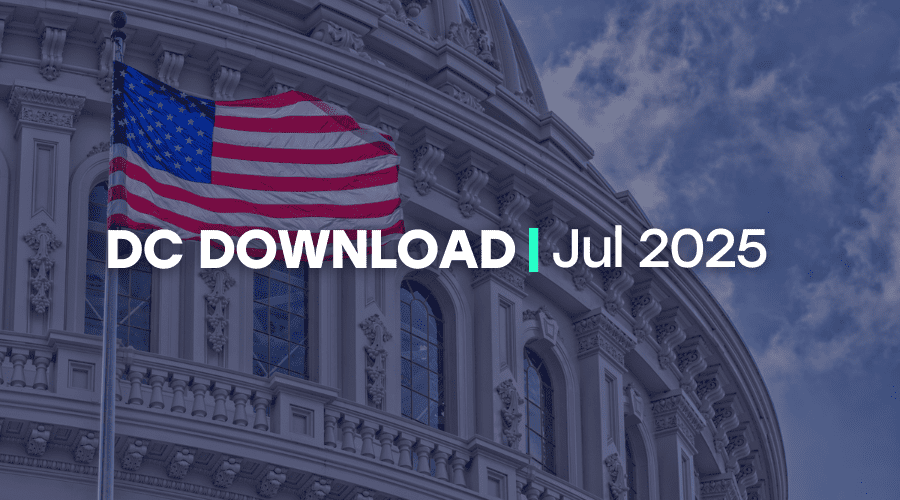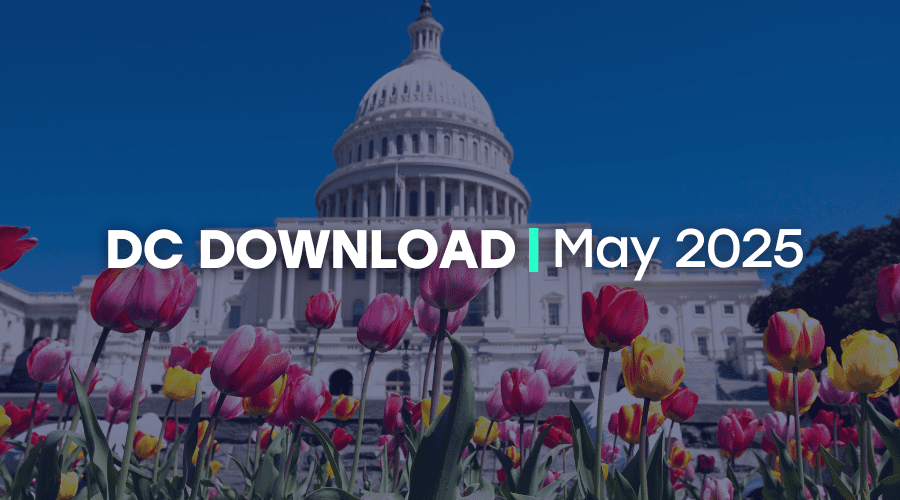In October, Independent Sector released our second annual Health of the U.S. Nonprofit Sector. The report details the status of nonprofits’ finances, human capital, governance, and efforts to shape their environment through advocacy. However, data is only part of the annual report. The second element, which many say is even more important than diagnosing sector health, focuses on what comes next: action.
When people visit their doctors for their annual health check-up, the doctor collects data. They check vitals, like temperature, weight, blood pressure, and many other variables to get a clear picture of a patient’s health. At the end of the appointment, doctors typically recommend actions the patient can take to improve their health in the next year, like exercise more, reduce stress, or drink more water. Similarly, Independent Sector’s report on nonprofit health offers recommendations on what policymakers, philanthropy, and nonprofits can do in the short- and long-term to improve nonprofits’ collective health.
Here are a few highlights from the report’s more comprehensive list of actions designed to improve nonprofit health by our sector’s next health check-up:
-
- Retain and Recruit New Donors: Giving in 2020 showed a reversal of a long-running downward trend of fewer households giving to charity. It remains unclear the extent to which this recent change is the temporary result of giving during a crisis, or whether it will be sustained without intentional action by both nonprofits and policymakers. New donors gave to nonprofits in 2020 for a reason, but it is up to individual organizations to continue to demonstrate their relevance. At the same time, policymakers clearly recognize their role, as evidenced by the creation, extension, and minor expansion of a universal charitable deduction. Congress must act by extending the deduction and raising the cap to a level that can effectively incentivize more giving.
- Promote Evidence-Based Practices to Close Diversity and Equity Gaps: Data shows a decline in the proportion of Black, Native, and other people of color, as well as women, represented in the sector workforce. These also happen to be populations disproportionately impacted by COVID-19. Researchers can help nonprofits understand underlying drivers of these changes. Even before this data is available, nonprofit leaders can work together to quickly identify and mitigate potential barriers that may be preventing women and communities of color from returning to the nonprofit workforce. In the long-term, nonprofits can prioritize practices, such as board and executive diversity, to help close some pay gaps and lead to higher job satisfaction rates. Nonprofit leaders would benefit from working with researchers to understand existing data to promote concrete, sector-wide practices that improve equity-based metrics in their own organizations, as well as the broader nonprofit workforce.
- Improve Digital Access and Literacy: In 2020, nonprofits reported concerns about their ability to continue providing services, and transitioning to virtual service provisions proved difficult if the communities they served lacked access to the internet or technology. As a result, nonprofits joined businesses and policy leaders to call for expanding broadband access to reduce inequity and enable more households to access nonprofit and government services. However, newly connected nonprofits and communities also require resources to understand how to safely use technology, including protecting their privacy. Significant investment by philanthropy and policymakers in digital literacy is required to complement policies to expand access.
- Advocate for Better Voting Policies: Nonprofits play a crucial role in democracy through educating and mobilizing existing voters and closing voting disparities. In 2020, a series of policy changes due to COVID-19, including early voting and mail-in voting, made it easier for nonprofits to engage voters in their communities. In 2021, some state and local governments began rolling back 2020 policies and created new barriers to nonprofit voter engagement. As a central player in the democratic process and the source of millions of dollars of philanthropic and voluntary resources, charitable organizations have a vested interest in public policies that make their nonpartisan voter engagement work easier, or more difficult. The year after federal elections and a decennial census is when policymakers decide voting policies for the next four to 10 years. Now is the time for nonprofits to make clear to policymakers our valuable contribution to the democratic process and the policies the sector needs to serve our communities.
We hope you will check out all 44 recommendations by downloading the full report here. Then, choose at least one action to help improve the health of an organization for which you work or volunteer in the next year. Imagine the collective impact we could make if staff and volunteers of 1.8 million organizations took just a single step to improve our shared health.



